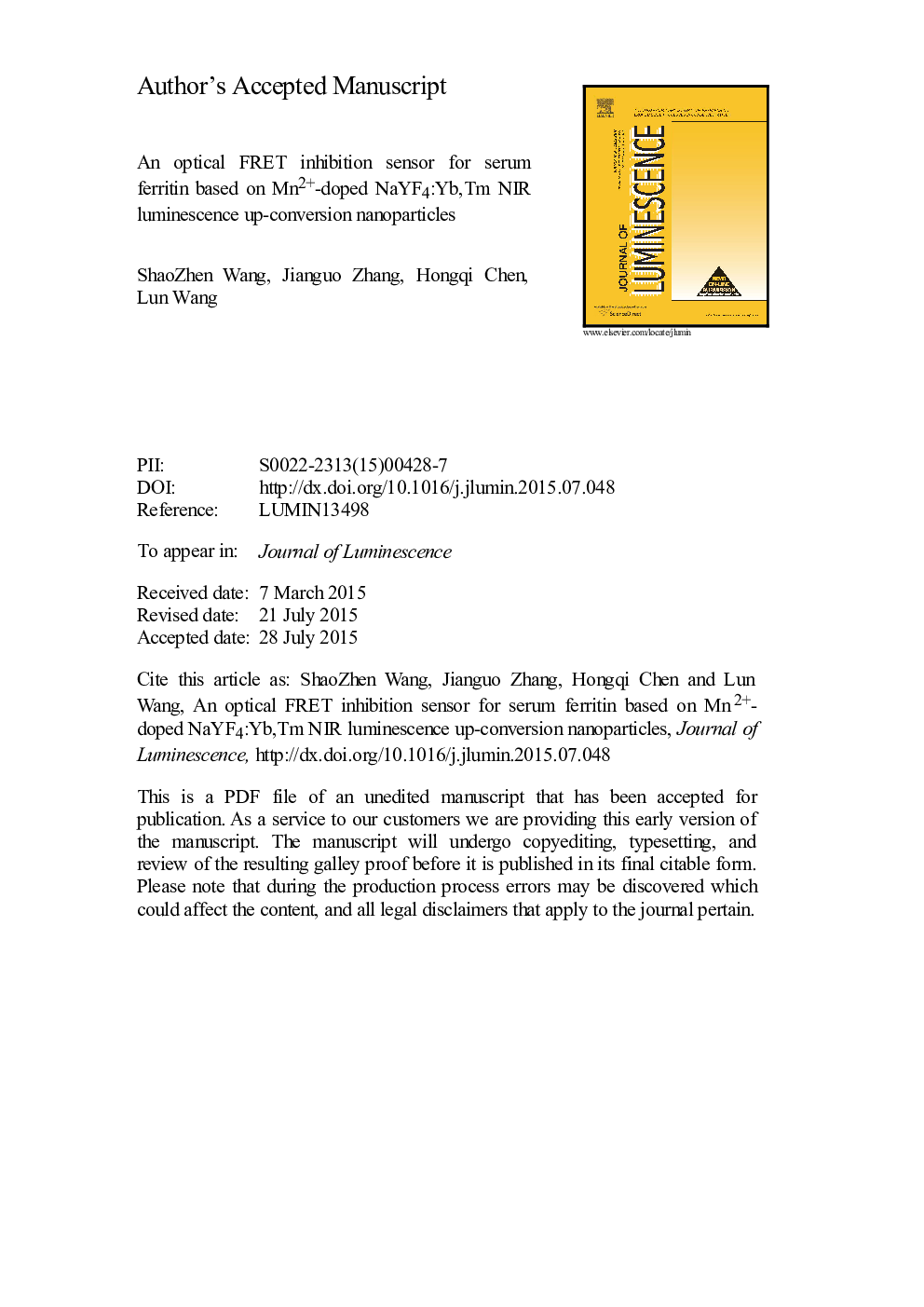| Article ID | Journal | Published Year | Pages | File Type |
|---|---|---|---|---|
| 5399274 | Journal of Luminescence | 2015 | 22 Pages |
Abstract
A new serum ferritin (SF) biosensor based on fluorescence resonance energy transfer (FRET) from Mn2+-doped NaYF4:Yb,Tm up-converting rare-earth nanophosphors (UCNPs, donor) to gold nanorods (GNRs, acceptor) was developed in the near-infrared (NIR) region. The as-prepared Mn2+-doped NaYF4:Yb,Tm UCNPs exhibited a strong emission at 807Â nm in the NIR region and were modified with poly-(acrylic acid) (PAA) before conjugating with anti-SF (Ab1). The negatively charged donor (Ab1-UCNPs) and the positively charged acceptor (GNRs) were mixed in close proximity due to electrostatic interactions, which quenched the fluorescence emission of the Mn2+-doped NaYF4:Yb,Tm UCNPs. However, added SF combines with the anti-SF because the binding affinity between SF and Ab1 is stronger than the electrostatic interactions. Thus, the acceptor separated from the donor, and the fluorescence was restored. Under optimal conditions, the restored fluorescence exhibited a linear relationship with SF concentrations ranging from 0.23 to 16.88Â ng/mL and a limit of detection as low as 0.12Â ng/mL. The proposed method was also used to monitor SF in human serum samples.
Related Topics
Physical Sciences and Engineering
Chemistry
Physical and Theoretical Chemistry
Authors
ShaoZhen Wang, Jianguo Zhang, Hongqi Chen, Lun Wang,
